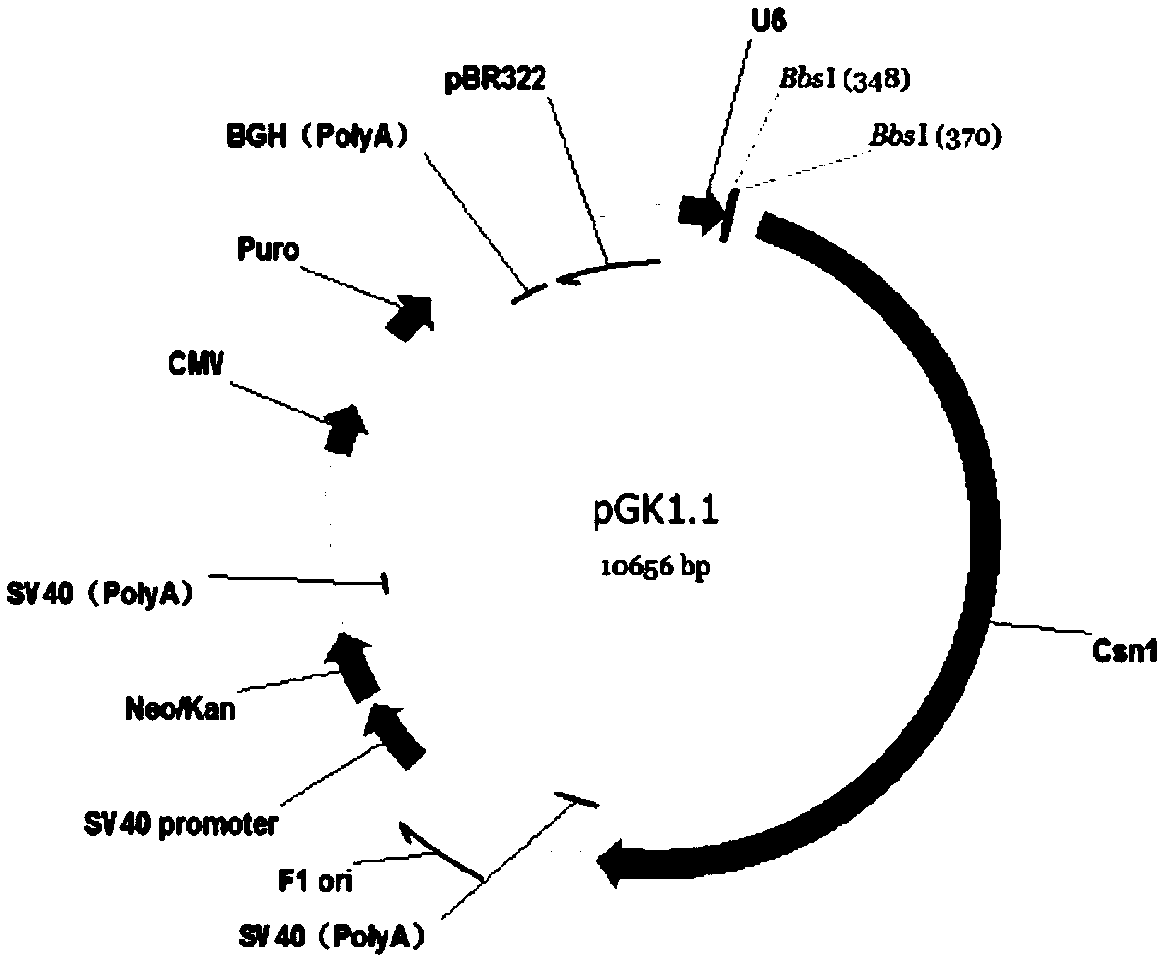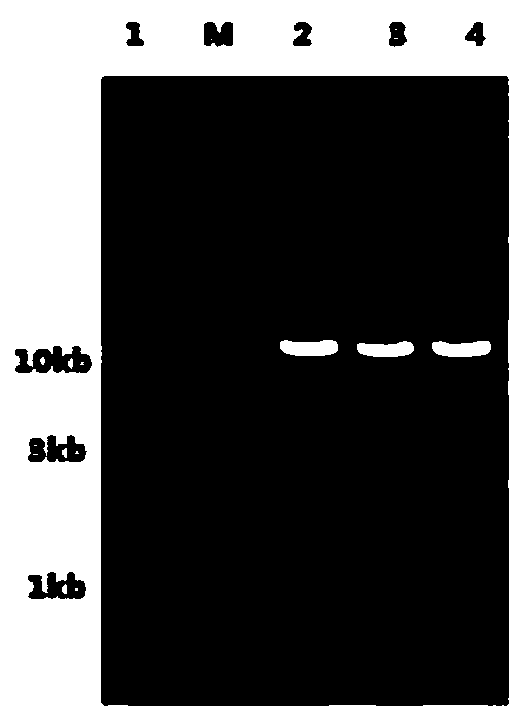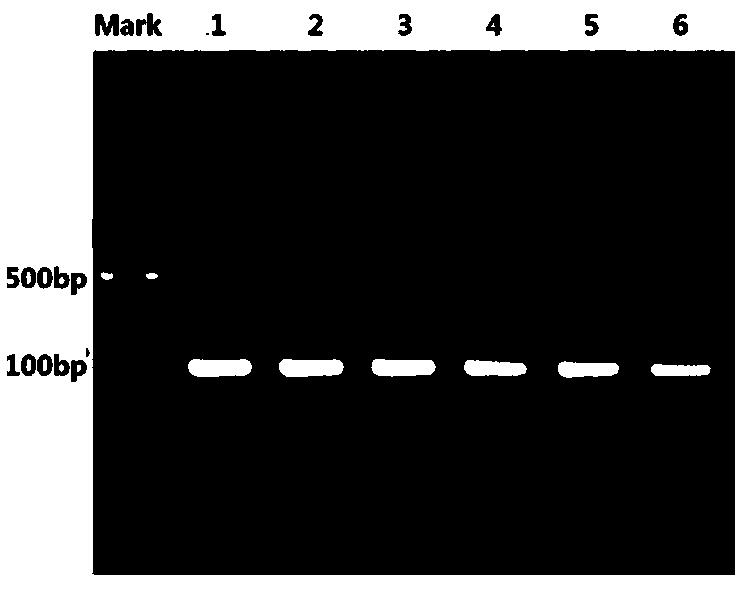Method for constructing human neuroblastoma cell line of which CAPNS1 gene is knocked out based on CRISPR/Cas technology
A technology of human nerves and mother cells, applied in the field of genetic engineering, can solve the problems of low transfection efficiency, difficulty in exploring transfection conditions, and difficulty in transfecting plasmids.
- Summary
- Abstract
- Description
- Claims
- Application Information
AI Technical Summary
Problems solved by technology
Method used
Image
Examples
Embodiment
[0040] 1) Designing Crispr / cas9 knockout target sites
[0041] First, a pair of oligo DNA of about 20bp needs to be designed in the target DNA region through the following online tools:
[0042] CRISPR Design at MIT: http: / / crispr.mit.edu /
[0043] Select the common CDS region of all transcripts of the CAPNS1 gene, find out the exons where the common CDS region is located for target site design, and select the fourth and fifth exons for target site design.
[0044] 3 target site sequence information:
[0045] CAPNS1-gRNA1: AGTTCGACACTGACCGATCAGGG (SEQ ID NO.1)
[0046] CAPNS1-gRNA2: TGAACTCCCAGGTGCCTTTGAGG (SEQ ID NO.2)
[0047] CAPNS1-gRNA3: CACTTTCATCTGAGTAGCGTCGG (SEQ ID NO.3)
[0048] 2) Add adapters to primers
[0049] Primer synthesis needs to add extra bases to the head of the target sequence, add CACC to the forward primer, and add AAAC to the reverse primer. It is important to note that the first base of the target sequence must be G. If the target sequence you c...
PUM
 Login to View More
Login to View More Abstract
Description
Claims
Application Information
 Login to View More
Login to View More - R&D
- Intellectual Property
- Life Sciences
- Materials
- Tech Scout
- Unparalleled Data Quality
- Higher Quality Content
- 60% Fewer Hallucinations
Browse by: Latest US Patents, China's latest patents, Technical Efficacy Thesaurus, Application Domain, Technology Topic, Popular Technical Reports.
© 2025 PatSnap. All rights reserved.Legal|Privacy policy|Modern Slavery Act Transparency Statement|Sitemap|About US| Contact US: help@patsnap.com



